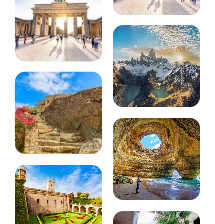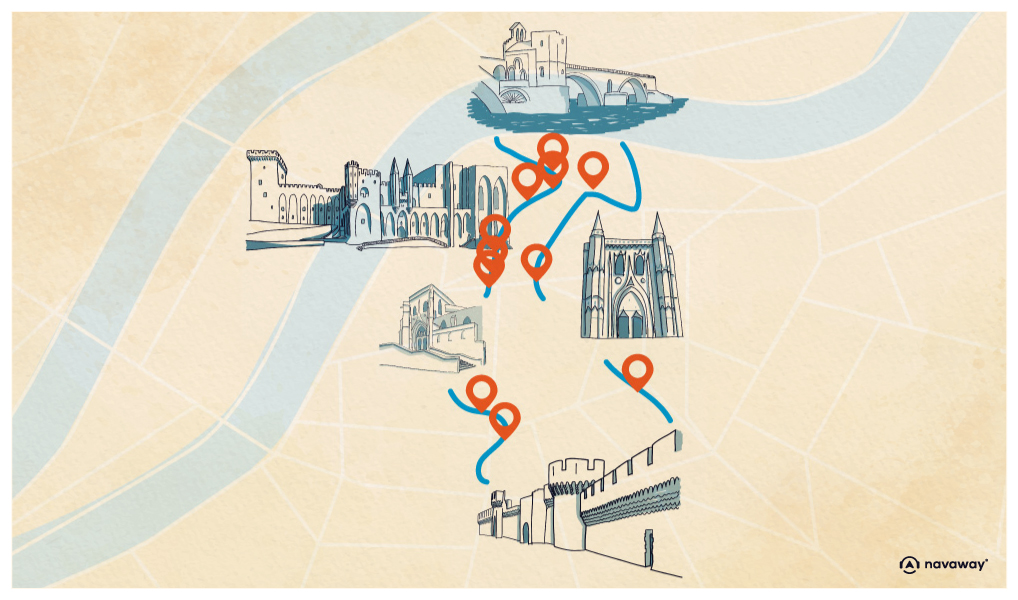
7 must-do things to do in Roussillon
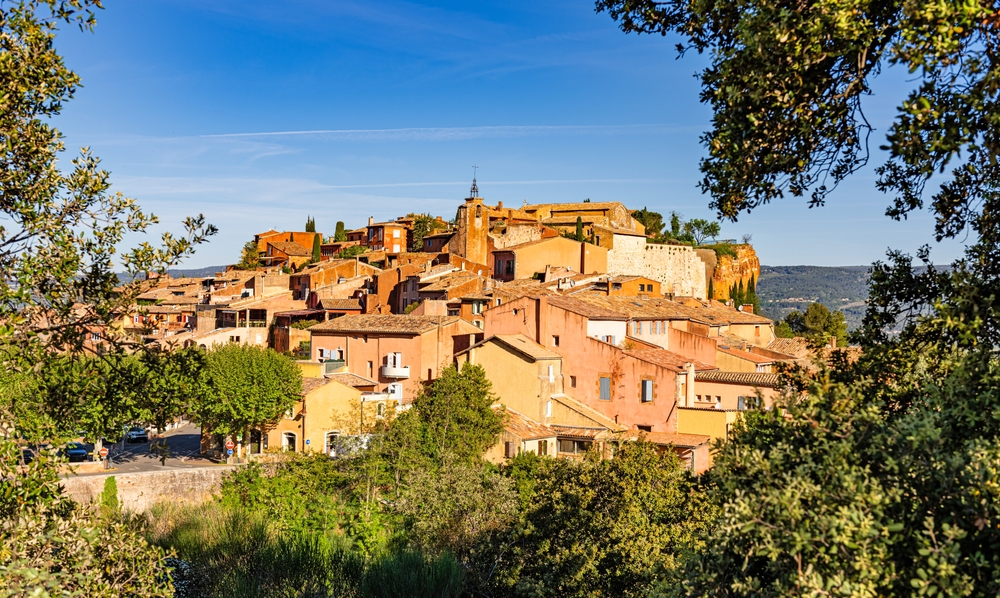
Nestling in the heart of the Luberon Regional Nature Park, Roussillon reveals its flamboyant facades in a thousand shades of ochre. This jewel of Provence, listed as one of the Most Beautiful Villages in France, fascinates visitors from all over the world with its exceptional heritage and its landscapes of unreal colours. From golden yellow to vermilion red, the ancient ochre quarries offer a unique natural spectacle. Here are the 7 must-do’s for visiting Roussillon and discovering all its hidden treasures.

See also the Luberon guide :
- 15 must-sees in the Luberon: complete guide
- 5 secret Luberon villages to explore in autumn
- The most beautiful villages around Avignon
- What are the most beautiful villages to discover around Avignon?
- The Most Beautiful Villages in France: 15 listed villages to visit
- The 18 must-sees to discover Occitania
1. Getting lost in the heart of the village of Roussillon
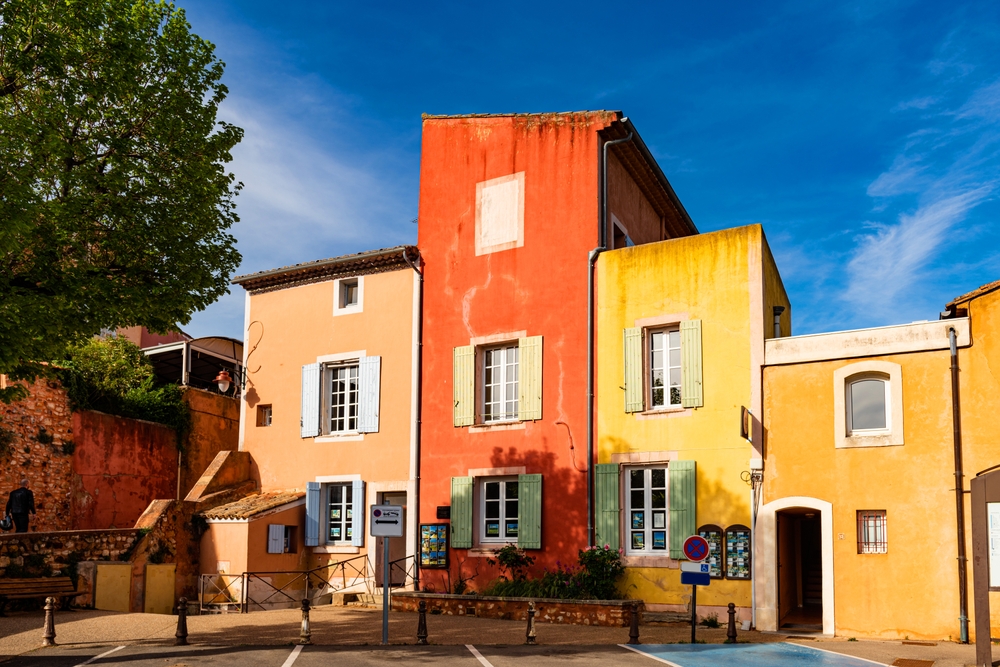
Before setting off to explore the geological wonders of the surrounding area, take the time to stroll through the historic centre of Roussillon. This Provencal village has an authentic charm that will win you over with its picturesque streets lined with warmly-coloured facades. The history of Roussillon dates back to Roman times, and every stone tells a story of this glorious past.
Wander through the narrow streets and discover the Place du Pasquier, Place de l’Abbé Avon and Place de la Forge, the beating hearts of the village. The houses with their red, yellow and orange ochre facades create a palette of colours that is unique in the world. This chromatic harmony comes from the traditional use of ochre for plastering, a thousand-year-old skill passed down from generation to generation.
Don’t miss theancient gateway to the medieval fortified enclosure, which bears witness to the strategic importance of the village in the Middle Ages. Artisans and art galleries dot the narrow streets, offering visitors the chance to discover local crafts and contemporary creations inspired by the ochre of the Luberon.
2. Admire the belfry and clock tower
The Roussillon belfry stands proudly at the old fortified gateway, a symbol of Provence’s architectural heritage. This former tower of the fortified enclosure was remodelled in the 19th century to become the church’s annexed bell tower. Its typically Provençal campanile, with its four open sides, still sets the pace for village life.
The clock tower, with its dials visible from several points in the village, is a major architectural landmark. A vestige of the medieval castrum, it is a reminder of the days when Roussillon was a strategic stronghold controlling the valley. From its perimeter, enjoy a panoramic view of the ochre roofs of the village and the surrounding hills of the Luberon.
To the left of the belfry, an unassuming passageway leads to the Castrum, theold parapet walk, from where you can enjoy superb views over the village and the Provencal countryside. These fortifications bear witness to the historic importance of Roussillon and today offer walkers unique views of the local architecture.
3. Visit the church of Saint-Michel de Roussillon
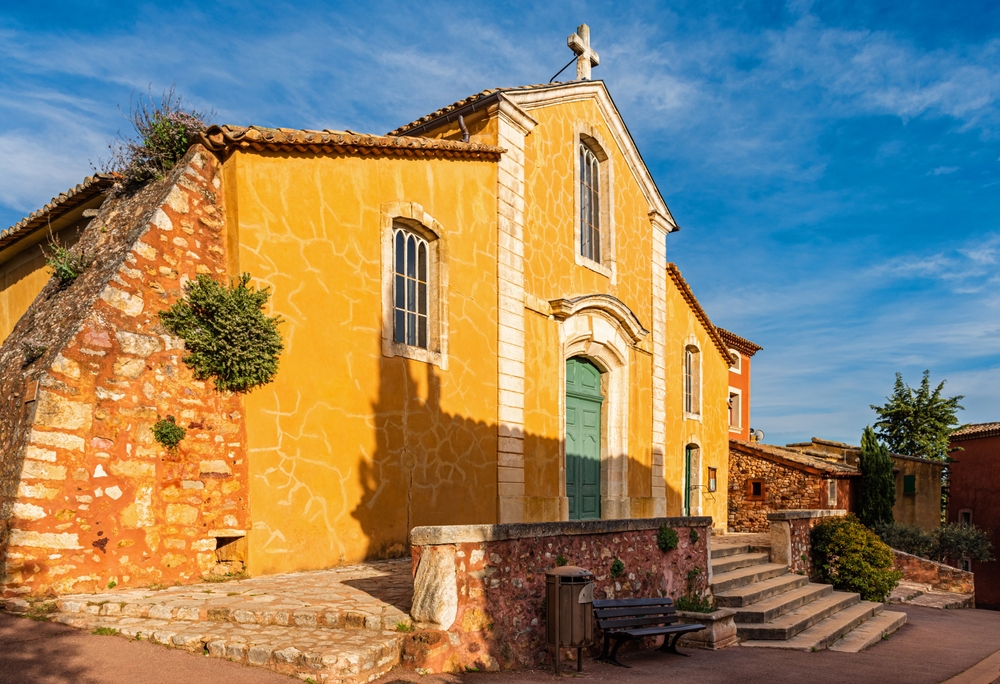
Perched on the heights of the village, on the side of a cliff, thechurch of Saint-Michel is a jewel in the crown of Roussillon’s religious heritage. Its spectacular location offers uninterrupted views of the Luberon mountains and the valley, making it an ideal vantage point for visitors.
On the outside, admire the 17th-century façade, a harmonious blend of classical elegance and Provençal charm. The choir, built in the 18th century, bears witness to the architectural evolution of the building over the centuries. Step inside to discover some magnificent period paintings and a remarkable finely carved wooden statue of Saint-Michel, who has watched over the faithful for generations.
Just beside the church, on the edge of the ochre cliffs, an orientation table helps you identify the various peaks visible on the horizon. The panorama takes in the Luberon mountains, the surrounding hilltop villages and, on a clear day, the Alps. This natural belvedere offers one of the finest views in the entire Vaucluse region (Rue de l’Église, 84220 Roussillon).
4. The Roussillon Ochre Trail
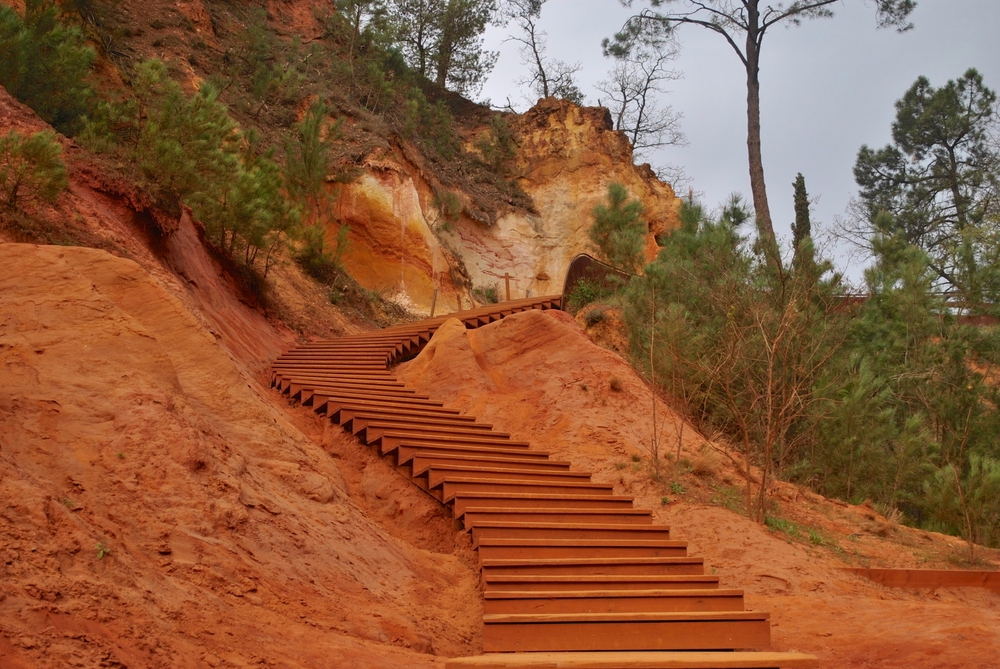
It’s impossible to visit Roussillon without walking the mythical Sentier des Ocres, the highlight of the show. This exceptional walk plunges you into the heart of the ancient ochre quarries, offering a magical landscape of flamboyant colours. From the very first steps, you’ll be captivated by this unique natural setting, sculpted by erosion and the work of man.
The site offers a choice of two routes: a short 30-minute circuit and a long 50-minute circuit, both designed to be accessible to as many people as possible. Throughout the walk, educational panels provide information on geology, Mediterranean flora, the industrial history of ochre and the formation of the Luberon ochre massif.
The old ochre deposits, once dug out by workers with shovels and pickaxes, are now shaped by the wind and rainwater. The result? An enchanting landscape of red ochre cliffs, slender fairy chimneys and mounds of coloured sand that range from yellow to purple. The low-angled light of the morning or late afternoon makes this natural spectacle even more sublime (Avenue de la Burlière, 84220 Roussillon, price: €3.50 per adult, free for children under 10).
5. Discover Ôkhra, the Ochre Ecomuseum
To learn more about the history of ochre and its industrial use, don’t miss a visit toÔkhra, the ochre and colour conservatory. Housed in the former Mathieu factory, this one-of-a-kind museum retraces the fabulous adventure of Luberon’s red gold.
Ochre has been used since prehistoric times, and the Provençal region was already exploiting it in Roman times. But it was in the 19th century that Jean-Étienne Astier developed a revolutionary industrial process: ochre sands were washed to extract the precious pigment. At its peak, the ochre industry in Roussillon employed hundreds of workers and exported its pigments all over the world.
At the ecomuseum, you can understand the transformation process, discover the different shades of ochre and how they are used in art, architecture and industry. Guided tours and technical courses are regularly organised for both amateurs and professionals. The shop also offers a wide range of natural pigments for artists and colour enthusiasts (570 route d’Apt, 84220 Roussillon, tel. 04 90 05 66 69).
6. Explore the orientation table and panoramic viewpoints
Roussillon has a number of natural viewpoints from which to admire the beauty of the Luberon Natural Park. The orientation table near the church of Saint-Michel is the ideal vantage point from which to discover the geography of the region.
From this rocky promontory, the view is far-reaching: the hilltop villages of Gordes, Bonnieux and Ménerbes stand out against the horizon, while the Luberon massif unfurls its limestone ridges. To the north, the Vaucluse mountains dominate the plain, with the snow-capped peaks of the Alps in the background on a clear day.
Along the Castrum, the ancient walkway that runs alongside the ochre cliffs, other spectacular viewpoints await you. These different viewpoints allow you to appreciate the striking contrast between the red earth of the old quarries, the deep green of the Mediterranean pine forests and the azure blue of the Provencal sky. Don’t forget your camera: the sunsets from these heights are absolutely magical!
7. Savour the Provençal art of living and local gastronomy
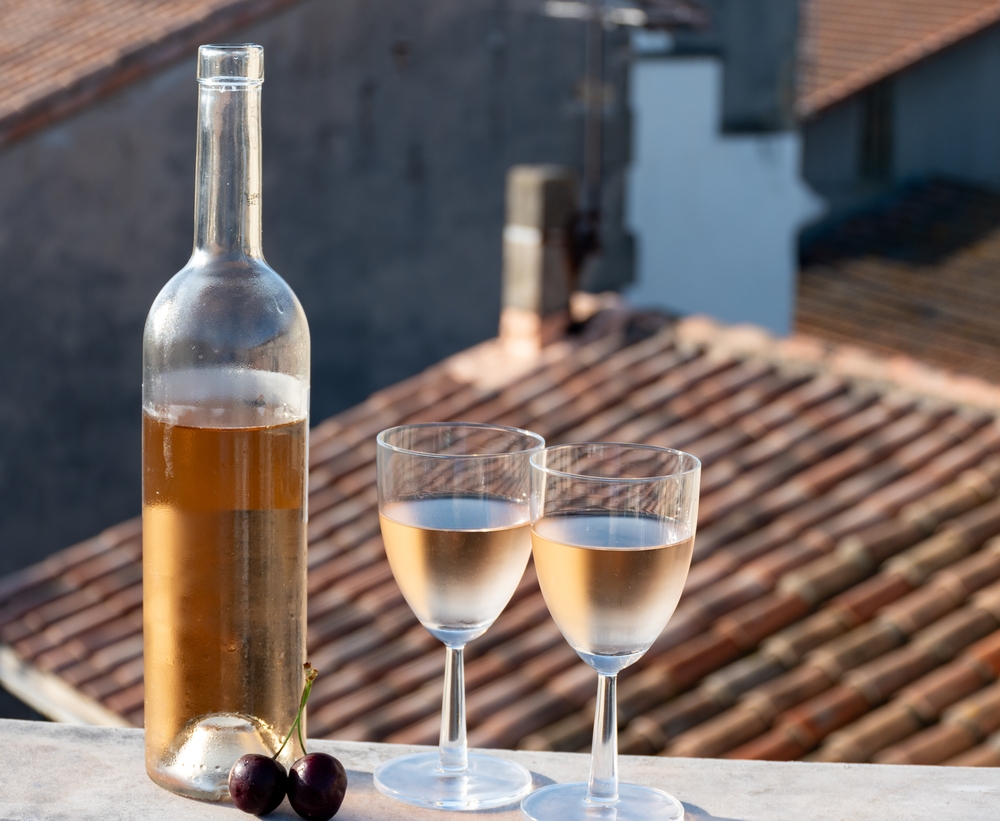
Visiting Roussillon also means taking the time to savour theProvencal art of living. The village has many shady terraces where you can sample local specialities. The restaurants and cafés in the main square offer a welcome break after exploring the Sentier des Ocres.
Taste the produce of the Luberon region: fruity olive oil from local mills, mature goat’s cheeses, Côtes du Luberon wines and fragrant lavender honey. The Provencal markets held in the surrounding villages are bursting with these gastronomic treasures. On Thursday mornings, the Roussillon market livens up the village streets with its colourful stalls of sun-drenched fruit and vegetables.
Art galleries and craft workshops dot the village, offering creations inspired by the colours of ochre: pottery, paintings, naturally dyed fabrics, jewellery… These authentic shops perpetuate traditional skills while reinventing them. Take advantage of your visit to bring back a unique souvenir that will prolong the magic of Roussillon long after you return.
In conclusion, Roussillon offers a complete tourist experience combining exceptional natural heritage, rich history and Provencal authenticity. From the colourful streets of the village to the flamboyant cliffs of the Sentier des Ocres, from the architectural heritage to the panoramic viewpoints, every moment spent in this jewel of the Luberon will leave lasting memories. Whether you’re a hiking enthusiast, a history buff, a photographer in search of light or simply an epicurean, this Most Beautiful Village in France will win you over with its singular beauty and bewitching atmosphere. So go ahead, explore the Luberon and let yourself be charmed by the thousand colours of Roussillon!
FAQ – Visiting Roussillon
Where is the village of Roussillon?
Roussillon is located in the Vaucluse department, in the Provence-Alpes-Côte d’Azur region, in the heart of the Luberon Regional Nature Park. The village lies around 10 km east of Avignon and 50 km from Apt, easily accessible via the D900 road.
When is the best time to visit Roussillon?
The best time to visit Roussillon is from April to June and September to October. Spring offers lush nature and pleasant temperatures, while autumn sublimates the colours of ochre with golden light. Avoid July and August if you want to enjoy the village in peace and quiet, as this is the peak tourist season.
Is the Sentier des Ocres accessible to children?
Yes, the Sentier des Ocres is accessible to children, who particularly appreciate this magical setting. The short circuit (30 minutes) is perfectly suited to families with young children. Be careful, though: shoes and clothes can be stained by the ochre, so make sure you wear appropriate clothing. Admission is free for children under 10.
Where can I park in Roussillon?
Several car parks are available around the village. The main car park is below the village, near the entrance to the Sentier des Ocres (paying car park in high season, around €4 a day). For campervans, there is the Saint-Joseph car park, a 15-minute walk from the village. The car parks are free from November to February.
Can you visit Roussillon in a day?
Yes, one day is all it takes to discover the essence of Roussillon. Allow 2 to 3 hours for the village and the Sentier des Ocres, and half a day if you also want to visit the Ôkhra eco-museum. If you want to take full advantage of the Provençal atmosphere and enjoy a leisurely lunch on the terrace, plan for a full day. Roussillon combines perfectly with visits to other villages in the Luberon, such as Gordes and Bonnieux.
200 audioguided tours for cities all around the world
Download